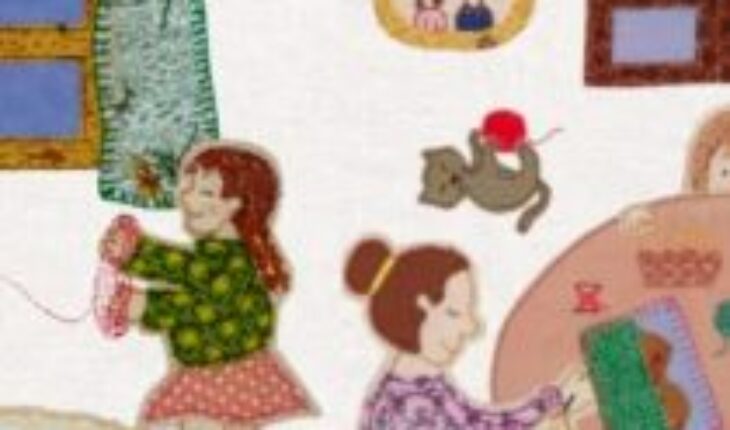The writer, narrator and disseminator of Latin American women’s literature, Marjorie Agosín, published the book of children’s stories “Las Arpilleras: una historia contada con hilo y aguja” (Editorial Mis Raíces), a selection of children’s stories that tells the lives of Chilean women who, through the art of manufacturing, managed to elaborate the mourning of the loss of their relatives in the dictatorship.
Addressing gender issues transversally in her work, Marjorie begins this interview with The Braga Counter expressing having been inspired by the Nobel Prize for Literature Gabriela Mistral when facing this project, “I felt that Gabriela’s extraordinary creativity and humanistic dimension was minimized; she saw herself as a simple rural teacher writing poems for children, but she was and still is an extraordinary artist and human rights activist,” she said.
In this sense, the publication pursues the purpose of making visible the lives of women who were silenced and who only managed to express their feelings and internal worlds through arts such as burlap, embroidery or weaving, making present the legacy of great women of mythology and history such as Athena, Penelope or Violeta Parra, but also of others whose names were not known, and which in this text are made visible.
“Embroidery, weaving, weaving and repairing have been part of women’s legacy throughout history. All of these metaphors constitute much of what women’s writing is. We also write with fragments that help us tell stories. Each fragment is an instant as is each stitch and it is correct to say that the interiority of women, the peace found in embroidery, are important manifestations within our subjectivity, “said the author.
The art of burlap, women and invisibilization: a way to get the voice out
“Delfina Nahuenhual”, “Military coup”, “A long walk” and “Returning to the cheerful hill”, are four stories that bring us closer to the experience of Chilean arpilleristas, who in the decade of the ’70s, took out their voices in pieces of cloth and dared to tell their experiences and portray scenes that marked the history of our country.
The main catalyst for the creation of Agosín was the silence that characterized that time, a stealth that, for the writer, is also directly related to the fact of being a woman. “I have dedicated myself to disseminating works by Latin American writers through anthologies. I always felt that women who write are only invited to dessert, access to publish is very difficult for them and I committed myself to the craft of writing and occupying a position at the table,” she said.
“I think that embroidery is a way of writing, let’s think of Ariadne who by means of a strand can leave the labyrinth, let’s also think about the cunning and loyalty of Penelope with her weaving and weaving,” she exemplified to refer to the work that the artisans fulfilled when denouncing before the whole world the social injustices that happened in Chile.
In this way, among the selected texts it is possible to find stories that invite children, adolescents and adults to reflect on the present and the past; the construction of female referents and the manual arts as a form of personal reconstruction:
“I also understood that cutting pieces of cloth and then joining them together taught us many things, such as the possibility of restoring, of recomposing in something the dignity of those who had been devastated” (fragment of the text).
Autobiography, disappearances, justice and reparation
In this scenario and as we already mentioned, the career and inspiration of Marjorie Agosín was marked by issues associated with the female condition, from mythological characters to great women in the history of Chile; as were the folklorist, popularizer and burlap violeta Parra or the poet and Nobel laureate Gabriela Mistral. However, from a more personal experience the author comments that her family life also had to do with this project, “my family always embroidered and my grandparents and great-grandparents were tailors”, confesses Agosín. However, their motivations for constructing a literary portrait of the lives of these Chilean arpilleristas goes beyond their blood ties. “The burlap moves are an extraordinary example of the value of women in the midst of adversity,” she said.
In this line, the stories touch closely on the experience of hundreds of women who to this day they are looking for her relatives who disappeared in the civic-military dictatorship – a theme that somehow connects her again with the history of her family – “I did not have disappeared in my family, but I am Jewish and a large part of mine were murdered in the concentration camps. This experience has defined my life in a very profound way and from there was born solidarity towards all persecuted beings, including of course the mothers of the disappeared in Latin America,” he said.
Finally, Marjorie refers to the women’s collectives that originated from the nucleus of women creators decades ago, a tradition that remains alive until today. “The arpilleristas of the time of the dictatorship have died and I do not know if they found reparations alive, but there is an extraordinary Memorarte collective that follows this legacy and that travels the world with burlap that protest the injustices that cross the country. They did their own work of denunciation and they are our future,” he concluded.
The stories contained in “Las arpilleras: historias contadas con hilo y aguja” are in printed version for infants, but it is possible to be read by people of all ages, you can find them in editorial my roots or on Amazon, along with all the publications of the author.





